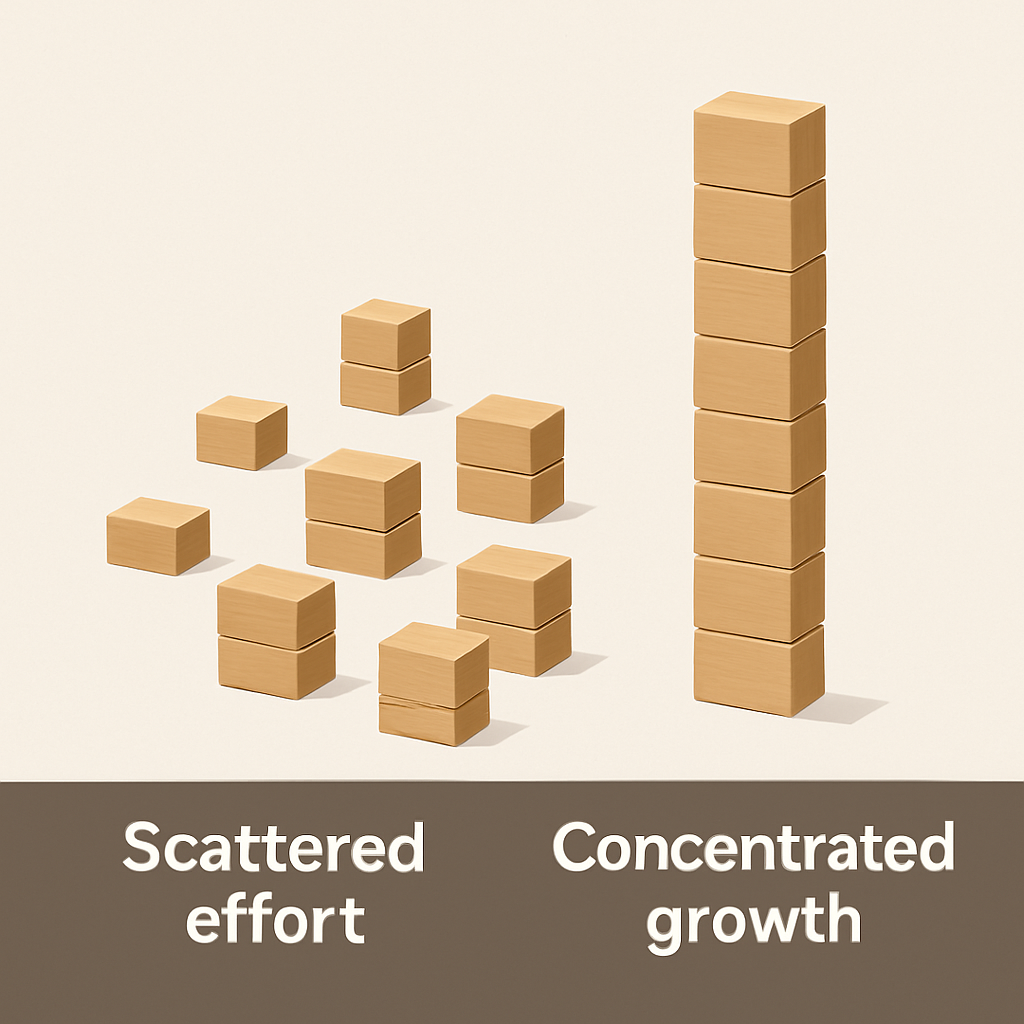How Many Keywords Should a Page Target for SEO?
Business owners often ask us, "How many keywords do I need for my website?" It's a fair question, but it focuses on the wrong metric. The total count doesn't matter nearly as much as how you use them. The answer is surprisingly simple: focus each page on one core topic, supported by a small, tightly-knit group of related keywords. Forget chasing a massive, site-wide list. This is about clarity, not quantity. Why Quality Beats Quantity in Your Keyword Strategy Think of your website like a sales conversation. If a homeowner in Temecula searches for "emergency plumbing," they have an urgent, specific problem. Your website can't afford to start talking about kitchen remodels. It needs to address their immediate need and related concerns, like "24-hour pipe repair" or "leaky faucet fixes." Google wants to see that same focused expertise. This approach shifts the goal from just collecting keywords to building genuine topical authority. Instead of trying to be a jack-of-all-trades, you prove you're the go-to expert for one specific thing at a time. This is a foundational concept in modern search engine optimization that builds trust with both search engines and potential customers. Finding the Sweet Spot for Each Page The old-school rule of "one keyword per page" is long gone. Today's strategy is about covering a user's entire need on a single topic, comprehensively. Back in 2020, SEO best practices had already shifted. A detailed analysis of over 1,000 high-performing articles revealed that the average top-ranking page actually ranked for 2.7 keywords. More telling, 68% of these pages used between one and four highly relevant keywords. You can dig into the full keyword usage research to see how this plays out across different industries. The goal isn’t to stuff more terms onto a page. It's to answer a customer's question so completely that Google sees your page as the definitive resource for that specific problem. By concentrating on one primary topic per page, supported by just a few closely related terms, you create a clear, powerful signal for search engines. This tells Google exactly what you’re an expert in, making it far more likely to show your page to a customer who needs your help. It’s how a local business becomes the obvious choice online. A Modern Keyword Strategy at a Glance So, how does this fit into your overall website? It helps to think about your keyword strategy at different levels: the entire site, specific service categories, and individual pages. Each level has a distinct role. Here's a breakdown of how we approach keyword targeting to build a powerful, cohesive website: Website Level Strategic Focus Keyword Guideline Site-Wide Your business's core services & brand 2-5 "money" keywords (e.g., "Temecula plumber") Section/Category Specific service lines or product types 10-15 keywords per section (e.g., "water heater repair") Individual Page A single, focused user question or need 1-4 highly related keywords (e.g., "leaking water heater cost") This tiered approach ensures your entire site works together. Your individual pages build authority that rolls up to support your main service categories, which in turn establishes your overall business as a leader in its field. It’s a smart, scalable way to build relevance that drives results. Keyword Clusters: The Secret to Topical Authority This page-level strategy of using 1-4 related keywords is often called keyword clustering. Instead of treating keywords as isolated targets, you group them based on user intent. Think of it like chapters in a book. Your main service page might be the chapter title, like "Drain Cleaning Services." The keyword clusters are the subheadings and paragraphs within that chapter, covering topics like "how to unclog a kitchen sink," "hydro jetting services," and "signs of a clogged main sewer line." This method lets you create incredibly comprehensive content that answers a user's primary question and all their follow-up questions in one place. You're not just targeting a single search query; you're covering an entire topic. That's what Google rewards. Why Chasing More Keywords Can Hurt Your Rankings It’s a common misconception: more keywords equals more traffic. On the surface, it makes sense. Cast a wider net, catch more fish, right? In reality, this approach often backfires, hurting your rankings more than it helps. Think of it this way. Imagine a food truck that’s famous for the best tacos in town. It has a clear identity. People know exactly what they’re getting. Now, what if that truck suddenly started selling tacos, pizza, sushi, and BBQ? It loses its specialty. It becomes generic, forgettable, and probably not very good at any of it. Your web pages are no different. When you try to stuff one page with a dozen different keywords, you're not telling Google you're an expert. You're just creating noise. This leads to two major problems that can quietly sink your SEO efforts. The Problem of Keyword Cannibalization First up is keyword cannibalization. This is what happens when multiple pages on your own website compete for the exact same search terms. You're accidentally pitting your own content against itself, forcing Google to guess which page is the real authority. Most of the time, Google can't make a clear choice, so it just ranks both of them lower. For instance, a roofer might create one page for "roof repair services" and another for "emergency roof leak repair." It seems logical, but both pages are chasing the same customer need. This internal conflict confuses search engines and dilutes your authority, preventing either page from ranking as well as a single, consolidated page would have. A study within the HubSpot community found that blog posts aiming for more than three long-tail keywords were 41% more likely to suffer from cannibalization. For the sites in the study, this self-inflicted competition led to a 19% drop in their overall organic traffic. You can dig into the full findings on keyword strategy yourself. Diluting Your Page Authority The second issue is diluted authority. Every page on your website has a certain amount of ranking potential. When you cram
How Many Keywords Should a Page Target for SEO? Read More »






